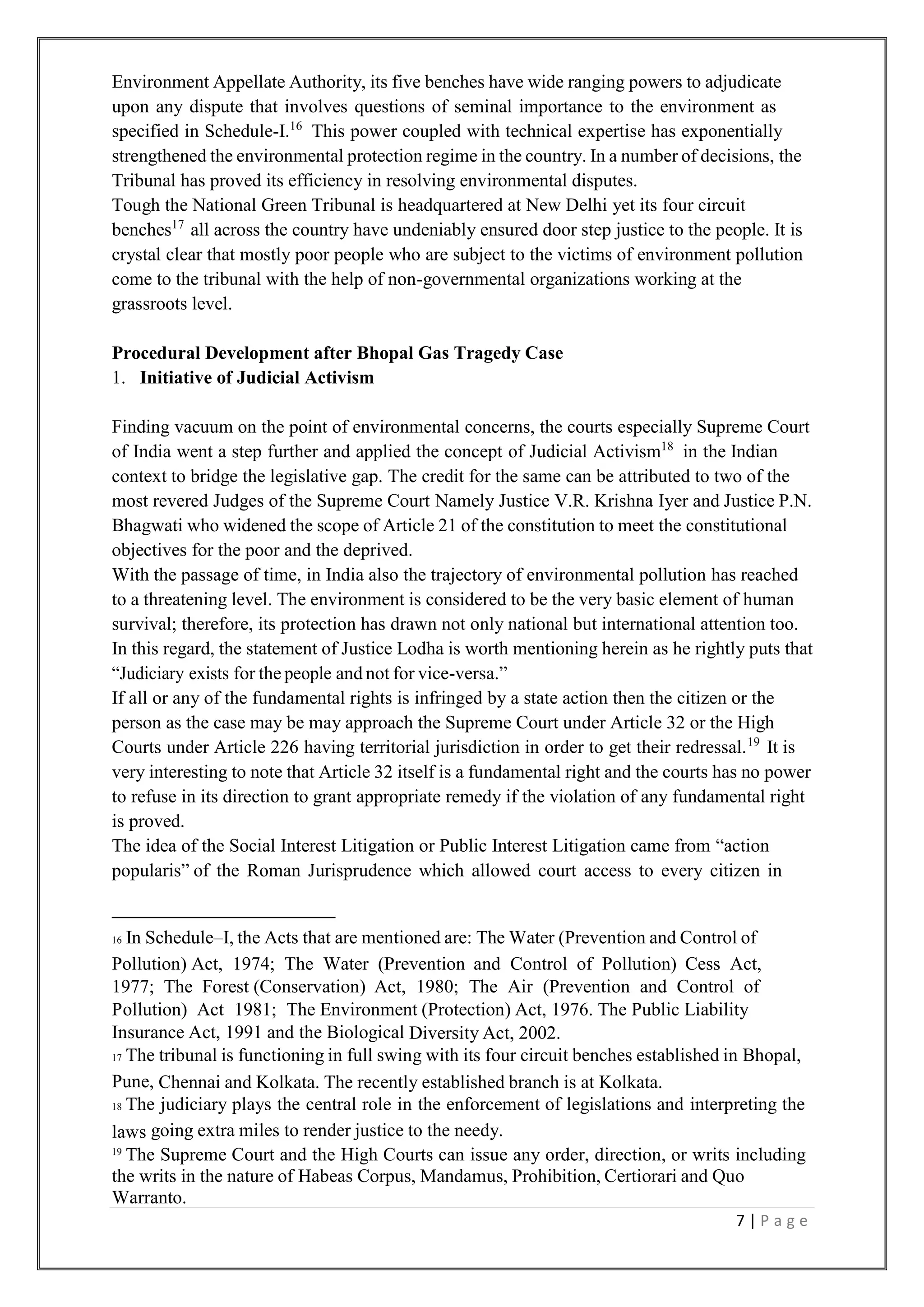This document provides an overview of environmental laws in India following the 1984 Bhopal gas tragedy. It discusses key developments and legislation:
1) The Bhopal gas tragedy killed thousands and exposed many more to toxic gases, highlighting the need for stronger environmental protections. It spurred the passage of new laws like the Environment Protection Act of 1986.
2) The Environment Protection Act of 1986 is the primary environmental law, giving the central government powers to regulate pollution and industry impacts. It defined "environment" broadly and allowed rules on specific issues like hazardous waste.
3) Other laws passed include the Public Liability Insurance Act of 1991, which mandates insurance for facilities handling hazardous substances to provide relief to victims of








